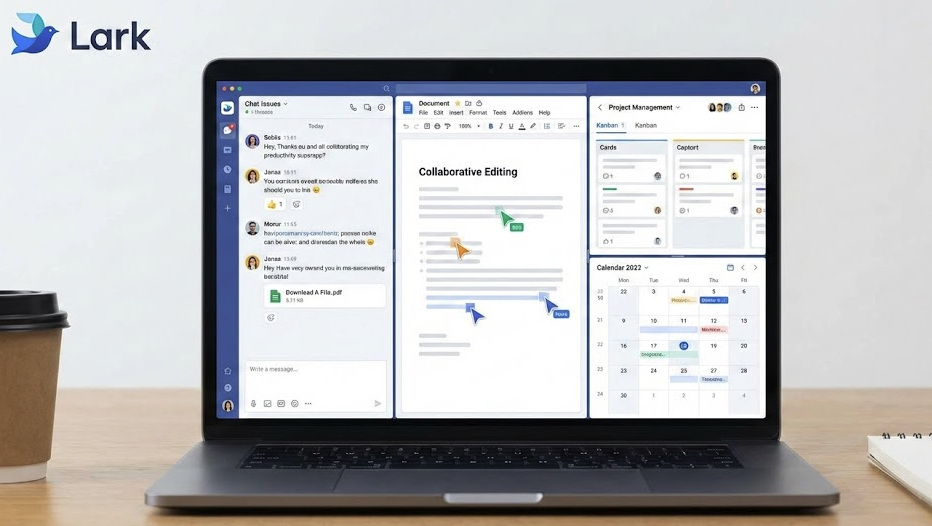In today’s business environment, companies are increasingly adopting hybrid and multi-cloud strategies to optimize their IT infrastructure. By leveraging a combination of public, private, and on-premise clouds, businesses can gain greater flexibility, improve performance, and reduce costs. Google Cloud offers powerful tools to support hybrid and multi-cloud environments, helping businesses achieve a better return on investment (ROI) while maintaining control over their infrastructure.
In this article, we’ll explore how your business can maximize ROI using Google Cloud’s hybrid and multi-cloud solutions without compromising on flexibility or performance.

1. Why Hybrid and Multi-Cloud Strategies Are Essential for Modern Businesses
A hybrid cloud strategy combines public cloud services with private cloud or on-premise infrastructure, allowing businesses to manage sensitive data and applications on-premise while using the public cloud for scalability and cost-efficiency. A multi-cloud approach involves using multiple cloud providers to avoid vendor lock-in and gain access to a variety of specialized services.
Key Benefits of Hybrid and Multi-Cloud Solutions:
- Increased Flexibility: Businesses can move workloads between environments as needed, optimizing for performance, cost, or security.
- Cost Optimization: Hybrid cloud allows businesses to keep high-demand workloads in the public cloud while managing sensitive or less frequent workloads in on-premise or private environments.
- Reduced Vendor Lock-In: A multi-cloud strategy ensures businesses are not dependent on a single cloud provider, allowing them to choose the best services from multiple vendors.
Pro Tip: Partner with a Google Cloud Partner Malaysia to design and implement a hybrid or multi-cloud strategy that maximizes your organization’s specific ROI goals.

2. Use Anthos to Simplify Hybrid and Multi-Cloud Management
Google Anthos is Google Cloud’s multi-cloud management platform that allows businesses to run applications across hybrid environments seamlessly. Anthos provides a consistent management layer, enabling businesses to unify their operations across on-premise, Google Cloud, and other public clouds.
How Anthos Maximizes ROI:
- Unified Management: Anthos provides a single platform to manage applications across different environments, simplifying operations and reducing the need for multiple tools and expertise.
- Consistent Security and Policies: Anthos ensures consistent security policies, monitoring, and governance across all environments, reducing the risk of security breaches and ensuring compliance.
- Workload Portability: With Anthos, businesses can easily move workloads between environments, optimizing for cost, performance, or regulatory requirements.
Pro Tip: Leverage Google Cloud’s Anthos to automate the deployment of containerized applications across multiple clouds, reducing the complexity of hybrid cloud management.

3. Optimize Costs by Choosing the Right Cloud for Each Workload
Not all workloads are created equal, and a hybrid or multi-cloud strategy allows businesses to optimize their workloads based on cost, performance, and compliance. Certain workloads may benefit from the scalability of the public cloud, while others may need the security of a private environment.
How to Optimize Workloads in a Multi-Cloud Environment:
- Public Cloud for Scalability: Use Google Cloud’s public cloud for high-performance workloads that require scalability, such as data processing, machine learning, or customer-facing applications.
- Private Cloud for Security: Run sensitive workloads on a private cloud or on-premise infrastructure where strict data privacy and regulatory compliance are required.
- Edge Computing for Low Latency: For latency-sensitive applications, consider edge computing to process data closer to the source, reducing network delays and improving performance.
Pro Tip: Use Google Cloud’s cost management tools to monitor and analyze cloud spending across environments, ensuring you are maximizing cost-efficiency.

4. Enhance Business Agility with Multi-Cloud Flexibility
A multi-cloud approach gives businesses the flexibility to deploy and manage workloads across multiple cloud providers, avoiding reliance on a single vendor. This flexibility allows businesses to choose the best services for each workload while reducing risk and improving resilience.
How Multi-Cloud Flexibility Boosts Agility:
- Access Best-of-Breed Services: Different cloud providers offer unique services, and a multi-cloud strategy allows businesses to take advantage of the best offerings from each provider.
- Reduce Downtime: By distributing workloads across multiple clouds, businesses can avoid downtime caused by outages in a single cloud provider’s infrastructure.
- Strategic Partnerships: Multi-cloud enables businesses to form strategic partnerships with multiple vendors, improving negotiation power and ensuring access to the latest innovations.
Pro Tip: Use Google Cloud’s multi-cloud services like Anthos to maintain consistency across providers while allowing teams to adopt the best solutions for their needs.

5. Improve Security and Compliance Across Cloud Environments
Security and compliance are top priorities for businesses, especially when operating in multiple cloud environments. Google Cloud provides comprehensive security tools to protect data and applications across hybrid and multi-cloud environments, ensuring compliance with industry regulations.
How to Enhance Security in Hybrid and Multi-Cloud Environments:
- Consistent Security Policies: Use Google Cloud Identity and Access Management (IAM) to enforce consistent security policies across all cloud environments, ensuring that only authorized users have access to critical resources.
- Data Encryption: Google Cloud provides encryption at rest and in transit to protect sensitive data, whether stored on-premise, in the cloud, or in transit between environments.
- Automated Compliance Monitoring: Use Google Cloud’s Security Command Center (SCC) to continuously monitor your cloud environment for compliance with standards like GDPR, HIPAA, and ISO 27001.
Pro Tip: Implement Zero Trust security architecture to secure access across all environments, verifying every user and device before granting access to your applications and data.

6. Maximize Performance with Intelligent Traffic Management
For businesses using a hybrid or multi-cloud strategy, managing network traffic between different environments is essential for maintaining performance. Google Cloud’s Traffic Director provides intelligent traffic management, helping businesses optimize performance and reduce latency.
How Traffic Director Improves Multi-Cloud Performance:
- Global Load Balancing: Use Google Cloud Load Balancing to distribute traffic across multiple regions, reducing latency and ensuring a high-quality user experience.
- Service Mesh Integration: Integrate Traffic Director with Istio Service Mesh to gain deep visibility into your application’s traffic patterns, making it easier to optimize routing and manage network resources.
- Multi-Region Failover: Use Traffic Director to set up multi-region failover, ensuring that if one region experiences an outage, traffic is seamlessly redirected to another, minimizing downtime.
Pro Tip: Combine Traffic Director with Google Cloud CDN to improve content delivery and performance for global users.
Conclusion:
By leveraging Google Cloud’s hybrid and multi-cloud solutions, businesses can maximize ROI while gaining the flexibility to optimize performance, security, and costs. With tools like Anthos, Traffic Director, and Google Cloud’s cost management features, businesses can ensure that their cloud infrastructure is aligned with their long-term goals for growth and innovation.
Contact Our Team
Are you interested to learn more about our products?
Do you wish to speak to us for professional advice on digitalizing your business?
Click on the button below to book a complimentary 1-on-1 consultation with an expert from our team.
















